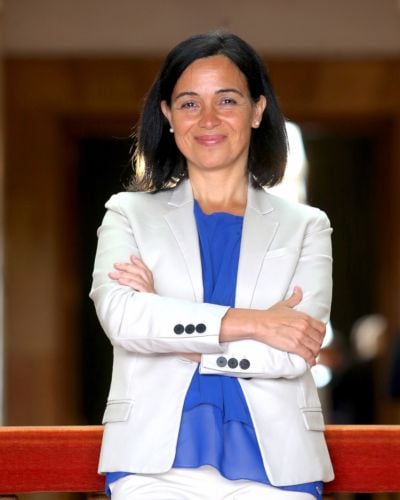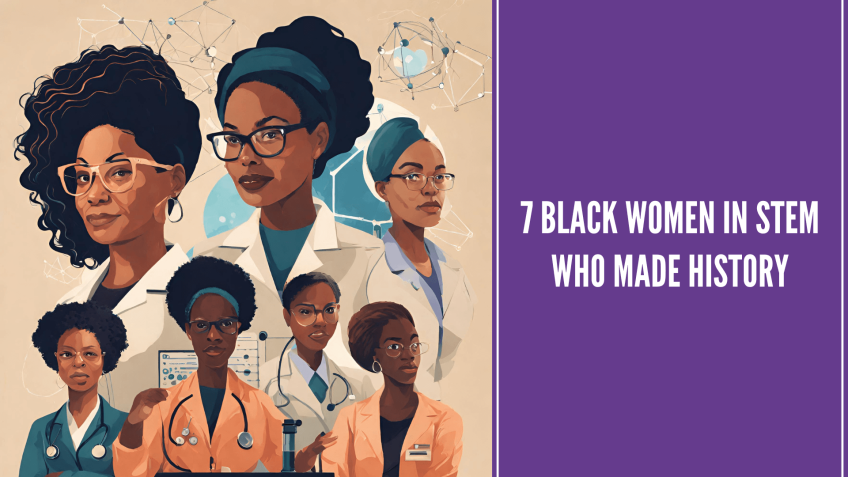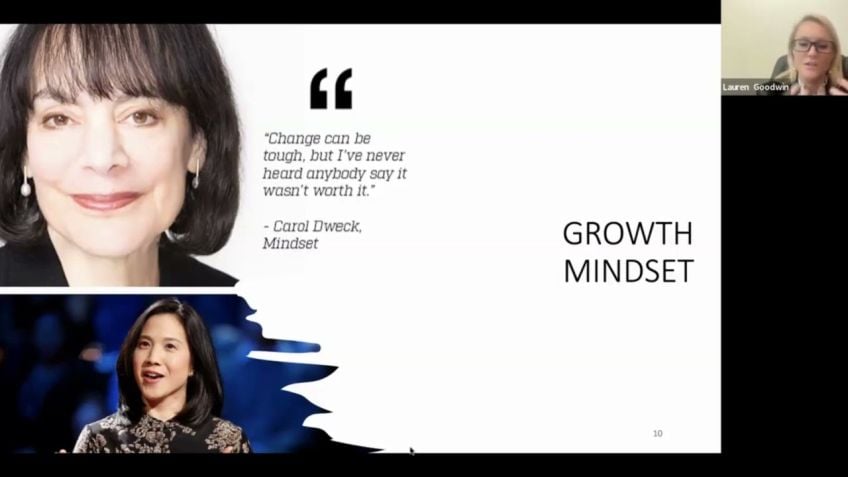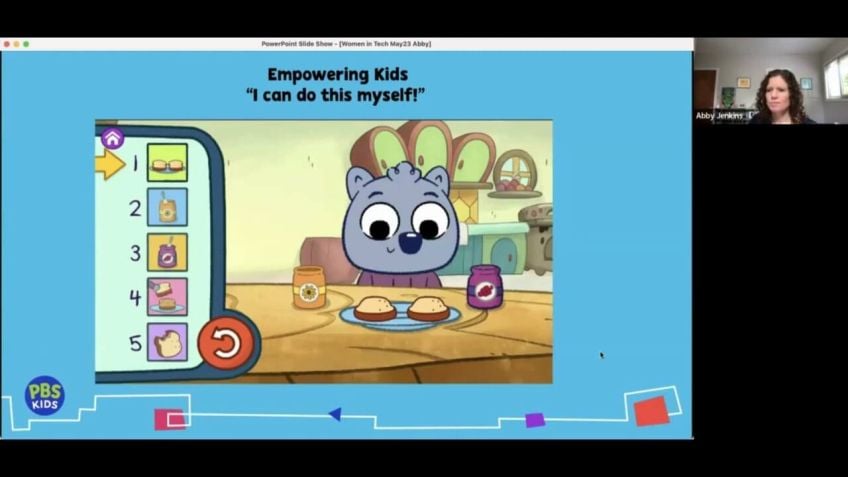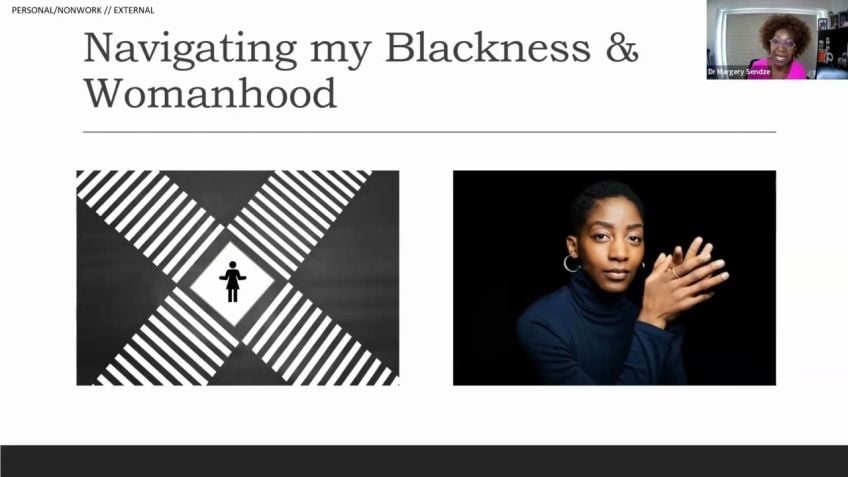Lessons learned from Mars and Moon Exploration: diversity, inclusion and gender balance
Maria-Paz Zorzano
Scientist, Civil ServantPromoting Gender Equality in STEM
Good afternoon everyone! Today we delve into the essential topic of gender balance in the fields of science, technology, engineering and mathematics (STEM). I will be sharing a unique perspective gained from my experiences as a planetary physicist in space exploration.
A Glimpse of My Work in Space Exploration
As a scientist, my realm is the uncharted territories of Mars that are explored through robotic missions developed by NASA and the European Space Agency. This multi-disciplinary realm involves collaboration among physicists, engineers, chemists, biologists, mathematicians, and informaticians, essentially covering all fields traditionally associated with STEM.
Education & Gender Equality: The Links We Must Forge
As researchers, there's an onus upon us to contribute to building a better society. Two areas where we can make pivotal contributions are the United Nations Sustainable Development Goals of education and gender equality.
For instance, UNESCO's "Cracking The Code" study on girls' and women's education in STEM points out that gender differences in STEM education emerge from early years. This is not due to a lack of aptitude, but due to prevailing stereotypes and societal expectations. Consequently, we must strive to make STEM disciplines more accessible and appealing to young girls. However, the challenge persists through professional career paths as well.
Mustered Numbers Highlight The Gender Divide
- Women constitute only 35% of STEM students in higher education, globally.
- Only 30% of the global research population comprises women.
- Around 48% of researchers are females globally. But in technical paths of academia, these percentages drop to around 24%.
These disparities indicate the urgent need for promoting female representation at all professional levels, from entry right through to leadership positions.
Reversing The Trends: Key Areas of Action
Promoting visibility, objectivity, and flexibility are key to breaking this disparity. This involves:
- Breaking Stereotypes: This requires extensive efforts to dismantle age, race, economic status, and origin biases besides gender, which often influence decision-making.
- Objectivity & Fairness: Consciously striving to be fair and transparent in our decisions.
- Balance: Encouraging work-life balance is essential for career longevity, crucially for women who often juggle full-time careers with primary caregiving roles at home.
Success Stories in Breaking the Stereotypes
Examples abound of breaking stereotypes in the space exploration field, like the Artemis crew for NASA's next moon mission. The International Space Station, an international cooperation program, also regularly showcases astronauts of diverse profiles.
Bringing About Change in Infrastructure & Policies
To enhance female representation in scientific missions, structures need to be put in place that promote competition and flexibility, and flatten hierarchies. This would enable the best candidates to succeed solely based on their merits.
Conclusion
As researchers, we have to set pioneering trends for society. By embracing diversity and inclusivity in all its forms, we can hope to influence institutions with lesser gender balance, and drive meaningful changes. It's essentially all about objectivity in decision-making, fostering visibility, and ensuring flexibility, to bring out the best in your team.
That's my message, and I invite your questions to explore this further. Thank you for your attention, and have a wonderful day!
Video Transcription
Good afternoon everyone. Thank you for joining us today here. Um I want to share with you some of my experience in uh promoting gender balance and what kind of experiences I've seen in science and, and technology that happened to work efficiently.I'm focusing here today on um one particular example, the one that I'm more familiarized with, it comes from the area of um space exploration. I'm a planetary physicist. I'm a scientist by training. And what I do for a living is that I explore Mars using robotic missions like those that are developed by NASA or the European Space Agency. And this is basically an area of research uh where we work together uh physicists, engineers, chemists, biologists, mathematicians, um informatician.
Uh you can think of all the fields that are traditionally described as the stem that means science, technology, engineering and mathematics. And um what I think is uh very important for us is to be aware that we have responsibilities to contribute somehow to a better world in, in whatever position we have in particular, when we are researchers, there is of course uh uh an expectation that we give something back to society and there are two topics where I think we can contribute positively.
Uh One of them is uh regarding the United Nations sustainable Development goal number four, which is education and the other one is uh gender equality. And I'm going to give you a few examples of how we can promote that. You may be aware that according to the recent study of unesco cracking the code, girls and women's education in science, technology, engineering and mathematics. Um it has been demonstrated that gender differences in stem education already start at the very early years. And the the reason why this happens is not because female girls, girls have different qualities or aptitudes. It's because they, they are different stereotypes and there are different expectations of what they can do. So in order to bring this talent, female talent to stem disciplines, we need to uh give this ability to give examples and to make it more accessible and more appealing um in the early years of their education. But this problem also continues all the way through the professional uh track and statistics. In this case, from the US, show us that whereas you can find almost 50% of females in in topics of biology. When you talk about chemist or mathematics or engineering or physics, then this percentage is very rapidly reduced. In spite of the examples that we have had of female uh researchers in the past who have had a spectacular contributions.
It turns out that we are not aware of this, uh these professionals, how they they contributed. And and then therefore these role models don't exist in our mind. The fact is that uh only 35% of stem students in higher education, globally are women. And when I say globally, this is an average. So it means that there are many countries where the situation for women and their access to university is even harder. We can only change things by setting examples in those institutions and countries that can afford to make this effort.
Um When it comes to research, only 30% of the world's average uh population are females. And then um the reason behind this is always attributed to be the stereotypes, the stereotypes that are portrayed in the media in the movies uh in journalism. And these are um assimilated by adults also and, and they are perpetrated through every decision that we make. So not only we need to attract a female talent to science and technology, but also we need to make sure that they are retained uh that, that they are safe conditions for female uh workers to continue their full pa uh path. I want to bring to your attention here. Some of the analysis done in this research uh program, it's a um study that is regularly maintained at the European Union. It's called the She Figures. Um And it's updated regularly. And here we can see for instance, that um even though about 48% of women in are of, of uh researchers are females. When you look at technical paths of uh research and, and academia, only 24% are covered by females. And when you look at the higher rank positions in research and the decision making uh positions, they are only covered by maybe one every four or one every five by females. And, and in return, this is going to perpetuate the situation for uh many years.
So we have to change that. I like this kind of graphs where you see the evolution from the early stages of uh studies in the university. When we have access to uh science studies, we are almost represented at 50%. This is uh again for the European Union. However, as you continue your training and you go through phd and postdoc and then the early stages of uh teaching or international collaborations, then this uh gap is opening at until the moment when you get to the highest position, which could be a professorship in the university where generally you tend to have only one every five or every four given to females.
So how can we change these trends? Um If you compare years uh consecutive periods of years as the ones that are shown here, there is a slight tendency for things to change. So some a uh activities that are being uh implemented, apparently they are effective. There are three major uh blocks where I think we can act in my opinion. As I mentioned, the first one is breaking the stereotypes providing visibility to females that are working in every kind of uh level of, of, of the spectrum. Uh but also ster breaking stereotypes about any other thing like uh age stereotypes. Do you, do you have an expectation of what is the age of a professor or do you have an expectation of what is the age where you should start doing the phd and the same for race and, and uh economical level and country of origin and so on, then we have to be very active breaking the unconscious biases that we all have whenever we are making a decision, who are we giving funding to, who are we promoting for this position?
Who are we giving the responsibility to supervise somebody else? We tend to have biases uh that come from from many years of working in the same way we expect to have a kind of candidate there. So we have to be, be always fair when we take the decision, be ready to be extremely objective to, to share the uh the ideas that made us take the decision openly and that way we are going to break this, this uh sick trend. And finally, of course, even if you promote females and, and you give this ability to them, there is a a the possibility that females decide not to continue in this career because uh there is uh it's very difficult to maintain a balance between work and life. Um And this affects not only women but also obviously men and not even people that have family may be single and you may want to have a healthy balance between your work and the life. And nowadays, there, there are ways of using computers and teleworking and, and networking to promote this. So what I suggest is that we try to promote visibility, objectivity and flexibility as these three fundamental areas of work to to break this gap. I'm going to give a few examples.
Here. We have the uh Artemis crew that has been selected for the next uh NASA mission to the moon. And you already see how we are breaking stereotypes. We're giving examples to the society of different uh people that are clearly heroes to our mind, they are brilliant, they are successful and they represent a different uh spectrum of society. And this has been done already in the International Space Station. This is uh an International Cooper operation program between NASA, the European Space Agency, Canadian Space Agency, Japanese and Russian Space Agencies. And regularly we see astronauts here and some of them also have covered uh leading positions like uh Samanta Soo who has been the commander of the International Space Station. And then here I'm giving you another example of how to break stereotypes. So now we have the Chinese experimental space station. And again, we have a female astronaut and she's communicating from orbit with Earth. She's sharing videos of uh science and this is something that we are well aware of now that uh astronauts besides being super clever, intelligent, having many studies and languages and, and being physically fit, they are also extremely good at communicating.
They are ambassadors for science and technology and they have a lot of responsibility in breaking these kind of stereotypes and also in promoting interest in society. So we can by no doubt, we we we think of an astronaut, we think that it's a hero that is well prepared. It is extremely brilliant and obviously they have, they must have been selected objectively. So we think that in this case, visibility and objectivity manage to give uh a team where where there is a balance, maybe this is not the most common example for a job career because there are very few profiles and because it's not the best one to to have in parallel with a personal life on earth.
Uh But I want to give a few other examples of the way uh we are doing this in the space exploration. So not only you can explore when you're an astronaut, but you can also do it from your home, using your computer when you're using robots. So if the robber is exploring the surface of Mars, this robber is communicating with earth on a daily basis. And here I'm giving examples from the uh Mars science about the curiosity robber, but it works the same for the um perseverance robber that is also working right now on Mars. These platforms have to communicate on a daily basis with Earth. They are sending data back to earth and receiving instructions from earth and when these decisions are made on earth, um they have to be done with themes that are distributed all over the world and they have to decide this within a few hours and in a cohesive way. Ar arguing, why do I recommend to do this or that? Now, in the case of curiosity, I know for a fact that has this has been working successfully for already 11 years that it has been in operation on Mars. And when you put together brilliant people uh with a good attitude, with a good spirit and you're using this kind of uh telecom, for instance, um networking infrastructures, then things can run very smoothly and, and the finally, the, the goal of this community is to make sure that you get the best out of the robber and you produce the best science and you do document this in scientific articles.
I'm sharing here some statistics, some uh analysis that I've done on the population and the gender distribution of the community of the Mars Science Laboratory. And it just start from top and go down. Uh As you can see at the beginning of the mission when the mission was proposed uh prior to being designed and built and launched, most of the critical roles were covered by mail. And this is what happens always in science that leadership positions are generally covered by mail and they are the ones that are getting the funding and the support from their institutions. Now as the mission was built and more investigators were joining the team and especially once it it landed, uh there was a problem called participating scientists that allows for scientists to apply to be part of the team for a couple of years. And this is a competitive program.
And you have to say I'm going to do this science. If you allow me to join the team, I'm going to use this data and I'm going to produce these papers and because it's so competitive and you really want the best. It turns out that the at the end naturally, we ended up having many uh brilliant women in the program. And um this is a graph that I'm not going to explain in detail unless you have questions about it. But it, it shows the evolution over the years of the percentage of female participation in planetary exploration and in particular, in the case of the Mars science laboratory. And I'm comparing the blue line which is based on the data that we have and where we are right now with the red line that it's what it tells you how many um phd students at the academic level have the training that could allow them to join the mission. So there is always a shift between the people that are actually ready to join and the ones that really join, there's always this trend to have less women that we should, but the the gap is going to be broken. Um So in summary, what I've seen that I think to me were the keys of success of this mission is that a participating, sorry, participating scientists are always competitively selected. And this decision is done in an organic way by, by the network.
And the reasons why you choose somebody, they might be, they must be objective and you have to be able to present them to other people external to the program, the people that join the team have responsibilities that are shared. So you don't have to commit to be like five years uh leading this and you're the only one I cannot get sick and I cannot have a um a leave to take care of my kids. You're going to be doing this in shifts, you're going to distribute uh or have a share of responsibility. But I'm always going to be accountable for my own ideas. I'm going to have visibility if I perform well, I'm going to be recognized for that. And what this means is that at the end, this is going to allow me dependent on my gender to build my CV. And to apply for other things uh beyond this, this mission. So these are my recommendations for other institutions, basically for scientific technical institutions and, and technical programs. I think we have learned that if you really have to do something that is extremely challenging, you want to have the best people in the team, you, you cannot afford to lose uh talent and you're going to focus, your decision is just going to be focused on the qualities of the people, not on their gender or their race or their age.
Um And if, if you have the selection approach based exclusively on excellence, then at, at the end, what you're going to end up doing is that you're going to give um an example of diversity and inclusion and you're going to promote people through the career path, allowing them to have more chances.
A key factor, at least to me was the flexibility in the in the group because uh if you're going to commit to 10 years program, I want to make sure that this is not going to be observant that I can, can keep some of the things in parallel. Maybe I have to teach, maybe I have to supervise my other student or as I said, maybe I have to, I may need some time to, to dedicate to my family. And also it's very important this networking idea that things are discussed openly and there is a flat structure. You have this parameter structure where things are decided at the top in a hidden way, you don't have to be accountable for the decisions. Then we're going to perpetrate these uh mistakes of the past. So my recommendations make a flat, competitive and flexible structure so that you give rise to the best, not only women but to the best candidates to, to promote based on their merits and their work. If you take this advice and you implement it in other fields, then I think we're gonna feel this is a contagious, positive effect on other areas. And and again, we have this responsibility in the case of research because because we are the avant garde of knowledge, we are the ones that we have to change the trends.
But in general, uh if we are working in countries that have a well established educational system, a safe um working environment, I think that we also can hope that we can give example to other countries where these uh these things are not guaranteed. And with that, I would like to stress once again, this is my uh take home message for you. I would like you to encourage, to provide visibility to all kind of roles. OK? Not only uh female roles to be objective on your decisions and make sure that you can share them openly, that you could be ready to, to, to confront the the scrutiny of people from outside and to implement working policies that are flexible and, and that way I can guarantee that you're going to get the best of your team.
So, thank you very much. And if you have any questions, I'm happy to answer them. Thank you and have a nice afternoon or nice day. Wherever you are, take care.

